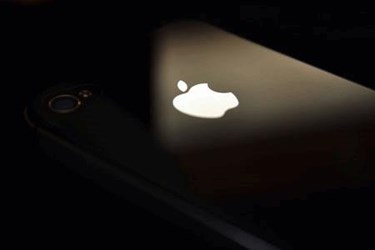Apple Files U.S. Patent Application For 5G Millimeter Wave Yagi Antennas
By Jof Enriquez,
Follow me on Twitter @jofenriq

EDIT: This article has been corrected. The initial article stated that Apple was awarded a patent for the discussed technology. Apple's patent application, number 20170309991, was filed in the second quarter of 2016, but has yet to be approved.
Apple has applied with the United States Patent & Trademark Office to patent its design for Yagi antennas in future devices that run on upcoming 5G wireless networks.
According to Apple World, a summary of the patent states: "An electronic device may be provided with wireless circuitry. The wireless circuitry may include one or more antennas. The antennas may include phased antenna arrays each of which includes multiple antenna elements. Phased antenna arrays may be formed from printed circuit board Yagi antennas or other antennas. A millimeter wave transceiver may use the antennas to transmit and receive wireless signals."
Millimeter waves (10-400 GHz) offer uninterrupted bandwidth at data transmission speeds and capacities on par with the best fiber optic communication systems, but not available at crowded lower frequencies, which makes them ideal for seamless connectivity under 5G networks.
While the technology appears to offer significant advantages, it has technical drawbacks, as stated by Apple in its patent application: "Operation at these frequencies may support high bandwidths, but may raise significant challenges. For example, millimeter wave communications are often line-of-sight communications and can be characterized by substantial attenuation during signal propagation."
Thus, Apple explains that it is "desirable to be able to provide electronic devices with improved wireless communications circuitry such as communications circuitry that supports millimeter wave communications."
According to Patently Apple, future iDevices from Apple may contain phased antenna arrays mounted at the corners of a housing, and these antennas may be printed circuit board antennas formed from patterned metal traces on printed circuit board substrates.
"The printed circuit board antennas may include Yagi antennas. Each Yagi antenna may have a reflector, a radiator, and one or more directors. The electronic device may have a metal housing with dielectric regions. The dielectric regions may be plastic-filled slots in the metal housing or other dielectric areas," states Apple's patent application 20170309991, which was filed in the second quarter of 2016.
A similar European patent for millimeter-wave Yagi antennas was granted to Apple in July, according to Patently Apple.
Like rival Google, Apple – which also is going into satellite broadband – is eagerly testing millimeter wave technology as it is expected to find significant application and usage in the higher frequency spectrum in next-generation wireless communications by the end of the decade.
Apple in August received approval from the Federal Communications Commission (FCC) for an experimental license to test 5G technology in the short-range millimeter-wave spectrum (28GHz and 39GHz bands), for background engineering data needed to run upcoming devices on wireless carriers’ future 5G networks.
